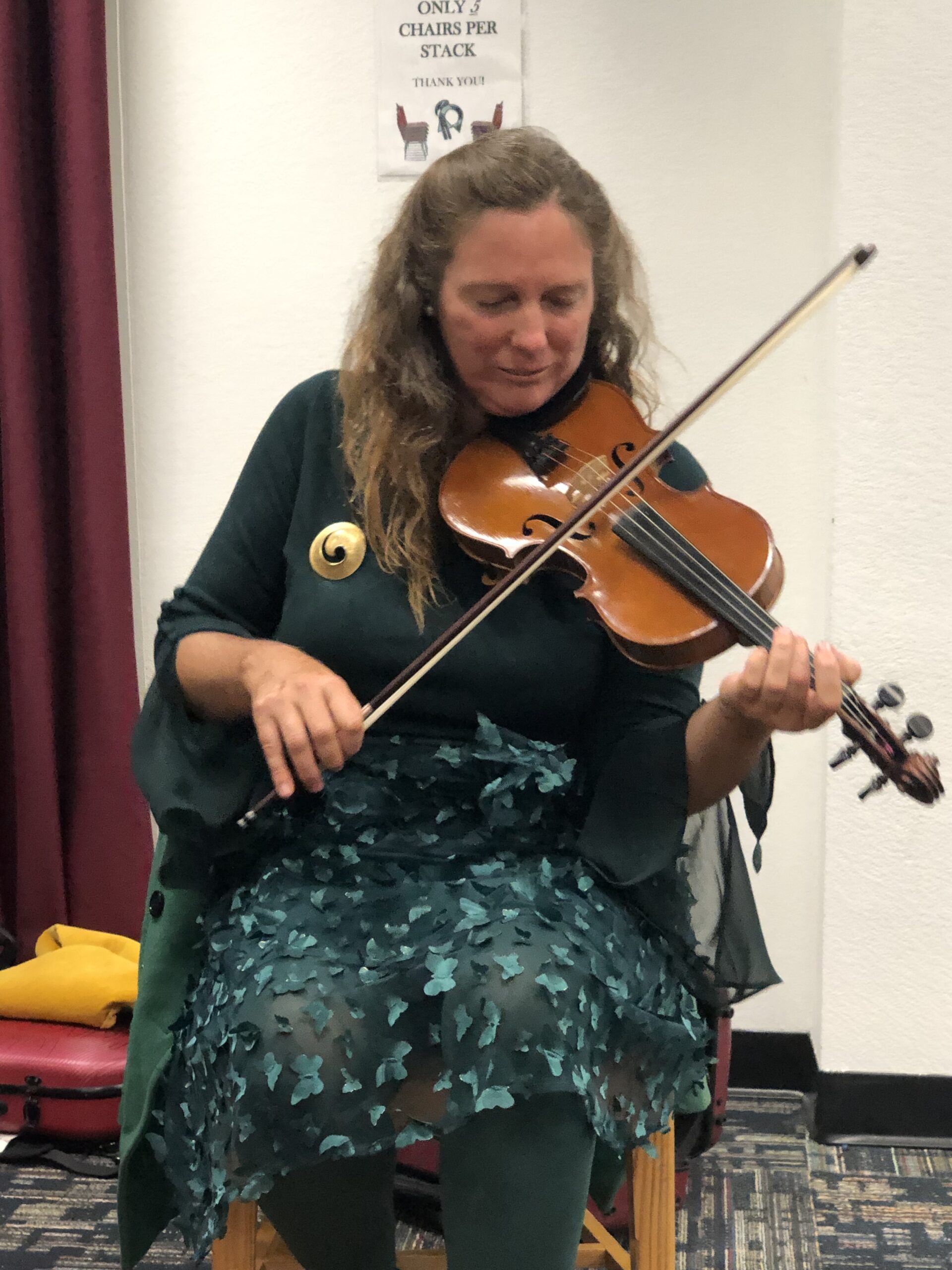Musician Kate Rose will be performing her solo show “Wild Irish Fiddle,” which showcases a mix of traditional Irish songs and Irish-American tunes, at the Cottonwood Public Library on Friday, March 15, from 4 to 6 p.m.
Rose grew up in an Irish-American family in New Hampshire, where she was surrounded by Irish music. Beginning in her early teenage years, she started playing at local gatherings. She went to Ireland for the first time when she was 15 to seek out the older generation of players and later lived in Ireland for a couple of years when she was 18.
“I was really fortunate to learn in the traditional Irish way by learning by ear from listening to and watching other players, and then playing for dances,” Rose said.
Rose is also of partial Greek heritage and spent time in Greece one summer.
“I heard people playing the bouzouki and singing and it just really captivated me,” Rose said. “I said, well, I want to devote my life to this.”
When she returned to the United States, she was unable to find any Greek bouzouki players but was more successful with enthusiasts of Irish traditional music.
“I started playing that and really connected with that,” Rose said.” It’s very different from music in schools. Everything about it is really different. I never really connected with the music that we learned in school.”
“When our roots go really deep, they all interconnect,” Rose said. “When I go deep into these Irish roots and the roots of the music and what it is, I can connect with other musical traditions and other musicians who are going deeply into their roots.”
When she was living in Ireland, Rose did farm work while she learned the traditions and music of western Ireland. She said that she learned as much about playing music by doing farm work through sitting and listening, as there are rhythms in cutting turf for fire, strenuous work and other agricultural activities. Rose noticed that at community dances, when she realized she could see these rhythms in the farmers’ dancing.
Rose also commented on the compassion to be found in the Irish countryside. When she first went to Ireland, she was living in the woods and participating in any musical activity she could find, but when winter set in, her neighbors were concerned and found an old farmhouse where she could stay. She attributed the strong Irish sense of caring for others to lingering memories of the potato famine.
“I think there’s a real sense in Ireland of solidarity,” Rose said. “Living there really helped me integrate in the community and get to know all the local farmers around and go to dances with them and also participate in their daily life, which is really traditional. This was in the ’90s and there were still people from a very different kind of time that had a more earthy outlook than most people have, strongly tied to the land.”
Rose added that the landscape itself was a musical education, as Irish music is very much tied to the landscape and history of Ireland.
“There’s a ruggedness in the people and there’s a kind of lonesomeness about it because during the famine, two thirds of the population was decimated,” Rose said. “It never recovered.”
She remarked that there are still few people in parts of the country as well as a high number of bachelors. There was even a bachelor festival every year where she lived.
Rose also remarked on the differences in attitudes toward music in America and Ireland. In the U.S. she said listeners are focused on technical proficiency, while in the west of Ireland, listeners are more concerned with whether or not music can move an audience.
“When they play, we can hear where they’ve been and where their ancestors have been,” Rose said. “We can hear the land and the history through the notes.”
During her performance at the library, Rose will be incorporating sean-nos singing, a traditional form of singing that she said is very raw and from the heart, as well as celebratory tunes that people can dance to.
“I want people to dance and experience it in their bodies the way I did and experience the function of music that can bring people together as a community,” Rose said.
“One thing I want to get across in my show is that sometimes people have this idea of tradition being something rigid, when actually what I found was a very open tradition. I found the old players really interested in learning tunes from other places, other people and other traditions. They’re so interested in that and always have been and Irish music has always loved to incorporate other kinds of music. It fuses beautifully.”
She said that innovation is an essential part of this tradition, as few traditional Irish performers had access to written music, which created room for personal expression while also making recreations of what had already been performed more challenging.
“I remember not only our history as Irish people, as Irish-Americans, but our common history as humans and our shared struggles as humans,” Rose said. “The songs that we have about the famine and immigration, they always get me thinking about immigrants today and the struggles that they’re going through. I like to make those connections. When I first heard this music, it really spoke to my soul and it’s been such a joyful and profound part of my life. I want to share that with people and to help them journey to some of these places and see some of these places the way I saw them and the way that people I learned from saw them and the way they saw the world.”
